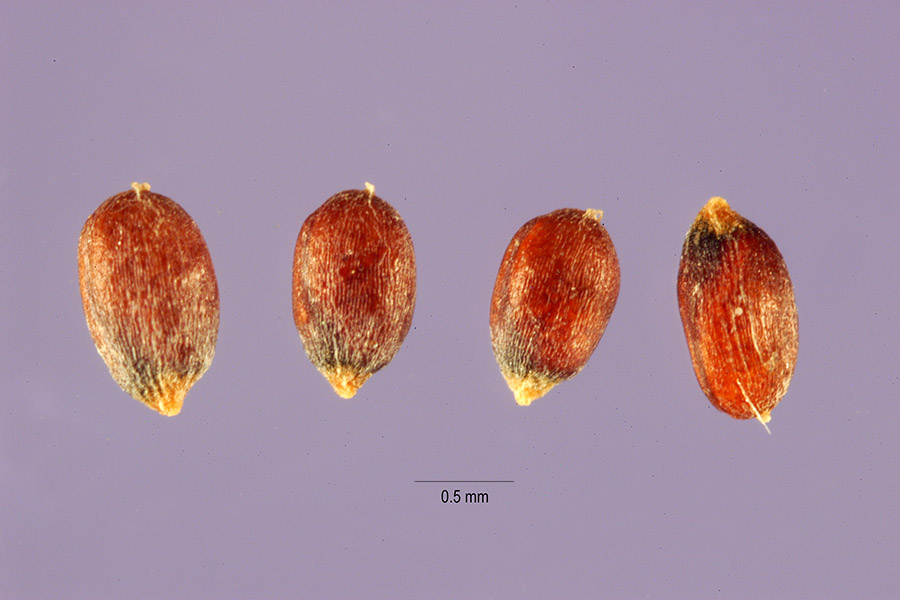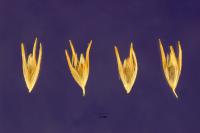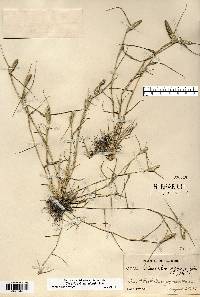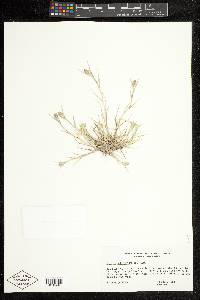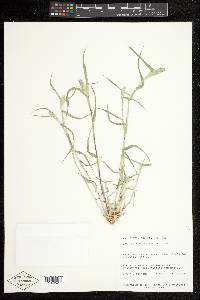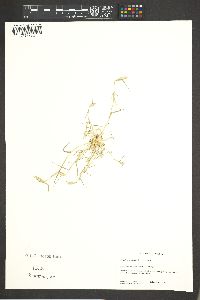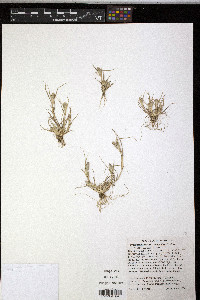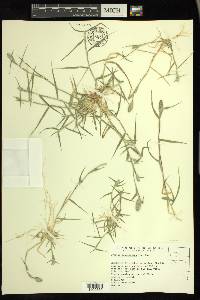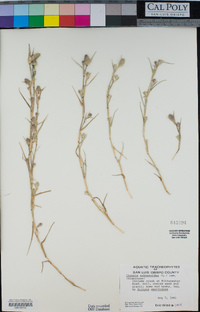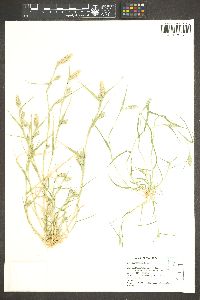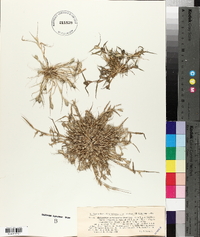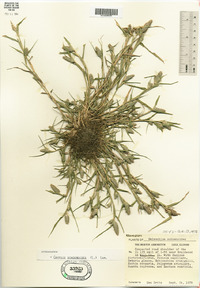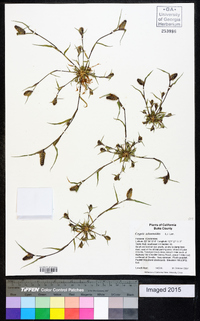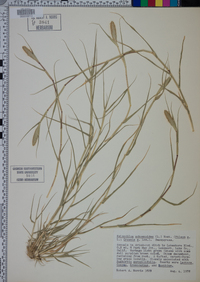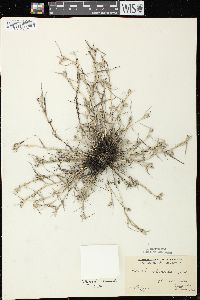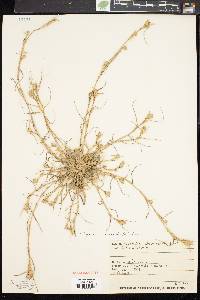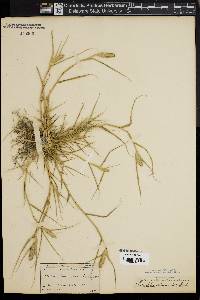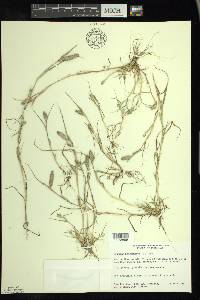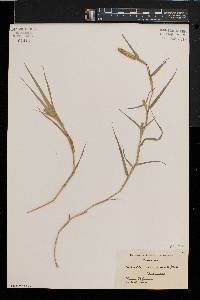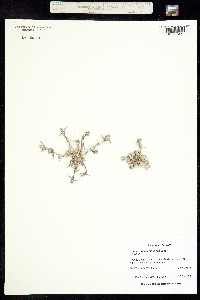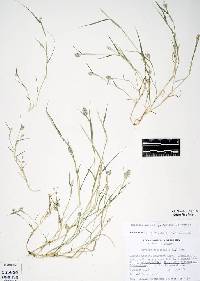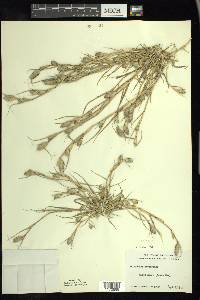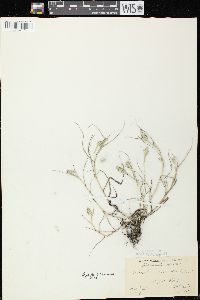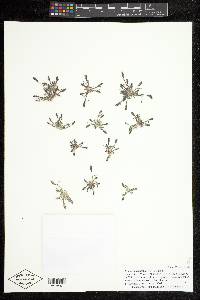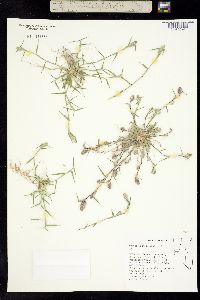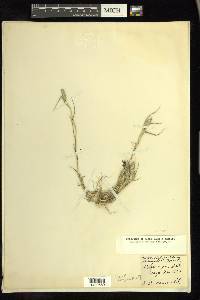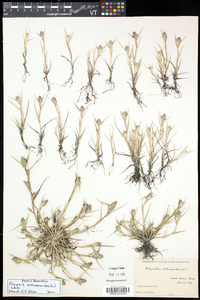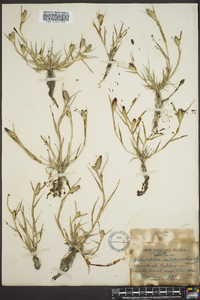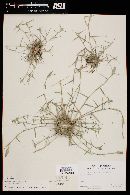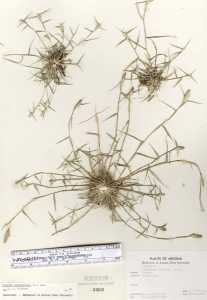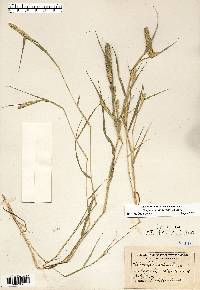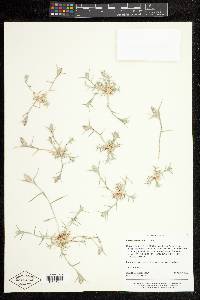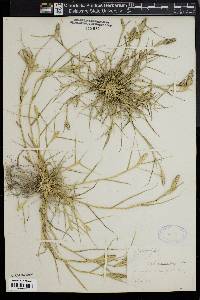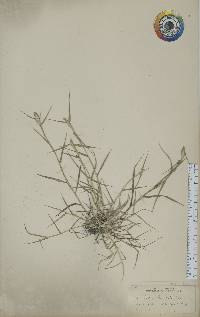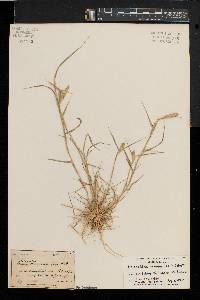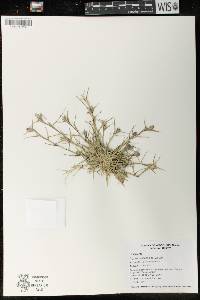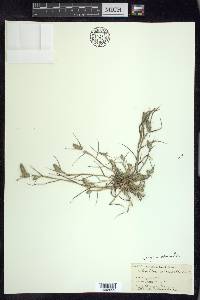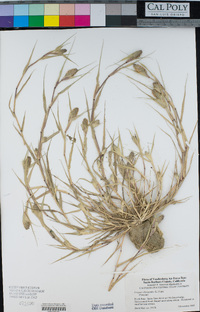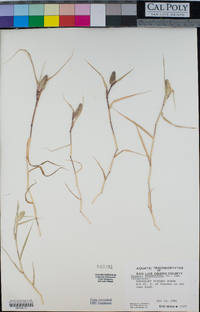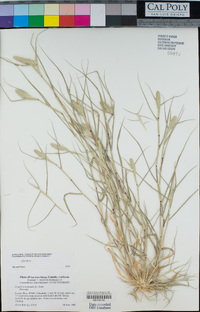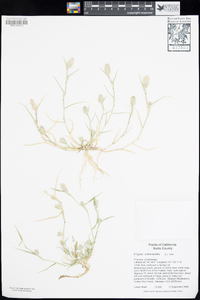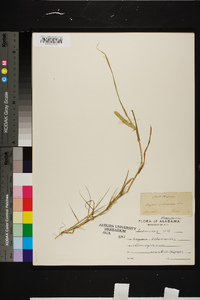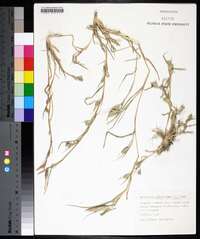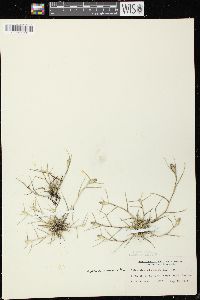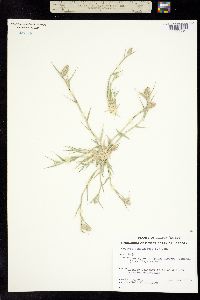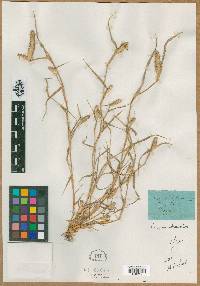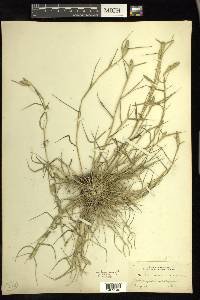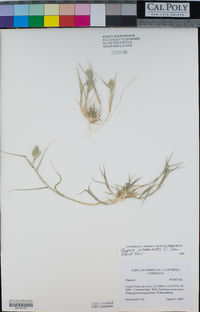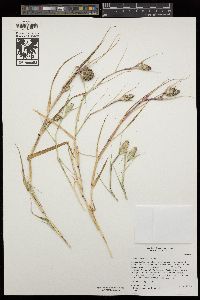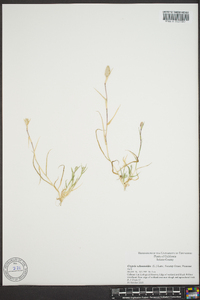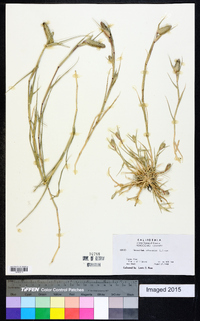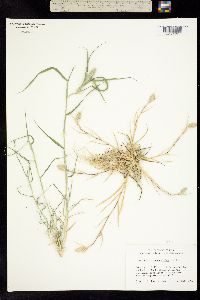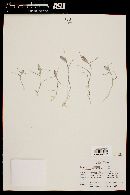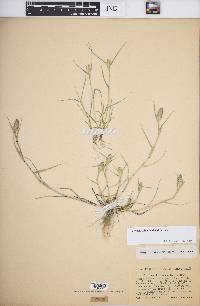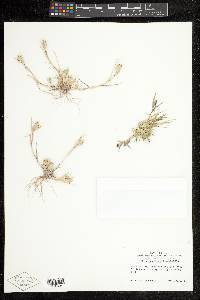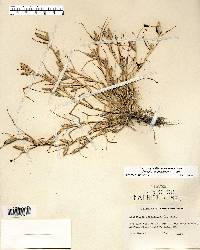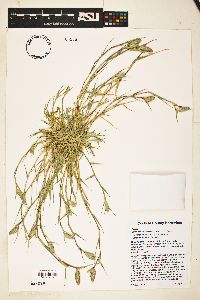
|
|
|
|
Family: Poaceae
Swamp Pricklegrass, more...swamp timothy
[Heleochloa schoenoides (L.) Host ex Roemer, morePhleum schoenoides L.] |
Culms 2-75 cm, prostrate to erect, sometimes geniculate, usually not branching above the base, but some plants profusely branched. Sheaths glabrous or ciliate at the throat, often inflated; collars glabrous; ligules 0.5-1 mm; blades 2-10 cm long, 2-6 mm wide, not disarticulating. Panicles 0.3-4(7.5) cm long, 5-6(15) mm wide, 1-5 times longer than wide, bases usually enclosed in the uppermost leaf sheaths at maturity. Spikelets 2.7-3.2 mm, tardily disarticulating. Lower glumes 1.8-2.3 mm; upper glumes 2.2-2.7 mm; lemmas 2.4-3 mm; paleas 2-veined; anthers 3, 0.7-1.1 mm. Caryopses about 1.3 mm. 2n = 32. Crypsis schoenoides is common to abundant in clay or sandy clay soils around drying lake margins and vernal pools. In the Flora region, it is most abundant in California, but also appears to be established in a few other western states. It is known from a few collections in several eastern states (where it was first introduced in the late 1800s), though apparently none more recently than 1955. Its native range extends from southern Europe and northern Africa through western Asia to India. Annual herb 2 cm - 0.83 m tall Leaves: with an open and usually inflated sheath that is hairless or lined with hairs at the throat and hairless at the collar, a 0.5 - 1 mm long ligule composed of hairs, and a 2 - 10 cm long and 2 - 6 mm wide blade. Inflorescence: branched (panicle), 0.3 - 7.5 cm long, 5 - 15 mm wide, one to five times longer than wide, with the base often surrounded by the sheath. Fruit: a caryopsis, about 1.3 mm long, oblong, with the wall of the matured ovary (pericarp) loosely surrounding the seed and slipping off readily when wet. Culm: 2 cm - 0.75 m long, prostrate to erect, sometimes having abrupt bends at the nodes (geniculate), usually only branched at the base, sometimes highly branched. Spikelets: 2.7 - 3.2 mm long, laterally compressed. Glumes: unequal, with a single vein and a strong longitudinal ridge (keel), the lower glumes 1.8 - 2.3 mm long and the upper glumes 2.2 - 2.7 mm long. Florets: one per spikelet, with a 2.4 - 3 mm long lemma, a two-veined and transparent palea, and three anthers 0.7 - 1.1 mm long. Similar species: No information at this time. Flowering: late July to mid September Habitat and ecology: Introduced from Europe, this species is found locally in waste soil such as railroad ballast. Occurence in the Chicago region: non-native Etymology: Crypsis comes from the Greek word krupsis, meaning concealment, referring to the inflorescence being partly concealed. Schoenoides refers to this species' resemblance to the genus Schoenus. Author: The Morton Arboretum Superficially resembling an awnless Alopecurus; culms tufted, erect to prostrate, 1-4 dm; spike-like panicles several, terminal and lateral, ovoid-cylindric, 1-4 cm נ6-10 mm, pale green, the base of each partly included in the distended sheaths of the 1 or 2 subtending lvs; spikelets 3 mm; 2n=36. Native of s. Europe, intr. in waste places here and there from Mass. to Del. and Pa., w. to Wis., Io., and Mo. Gleason, Henry A. & Cronquist, Arthur J. 1991. Manual of vascular plants of northeastern United States and adjacent Canada. lxxv + 910 pp. ©The New York Botanical Garden. All rights reserved. Used by permission. |

